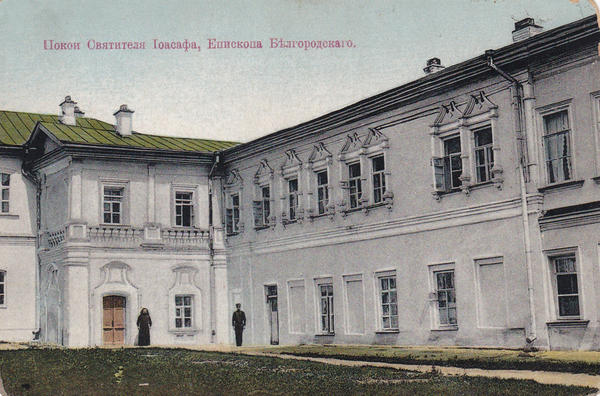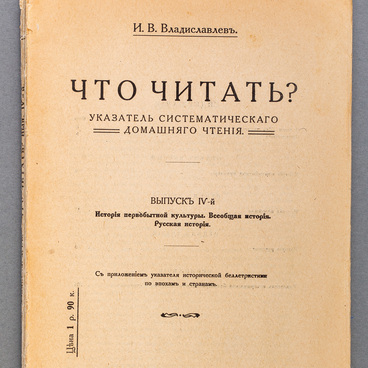The construction of the Holy Trinity Belgorod Monastery began in 1690 with laying a cathedral. In subsequent years, under the auspices of Metropolitan Justin, other buildings appeared on the territory of the monastery. The year 1705 marks the beginning of the construction of the building, which housed bishop’s cells and a chapel, consecrated in honor of Saint Anthony and Theodosius of the Caves.
In the same year of 1705, Joachim Gorlenko was born, who later became Saint Joasaph. In 1748, when he became a bishop, he received the building as his quarters.
The windows of the living room, the hall and the front porch, over which there was once a balcony, face the west; the windows of the church, dining room and bedroom — the east, and two side rooms — the north. According to legend, the bishop’s mother, brothers, and sisters with their wives and husbands stayed in those rooms.
Already after Gorlenko’s death, it was decided to expand the chambers and renovate the interior decoration. At the same time, all the bearing walls and partitions were left untouched: the builders did not remodel the building and only supplemented the premises with extensions from the south side. Over time, they became new Bishop’s Chambers, adjacent to the old building.
At the beginning of the 20th century, the Holy Trinity Cathedral was renovated: in 1906, central heating was installed, and in 1908, a pulpit was arranged in the altar part. By 1911, the year of finding the relics of the Saint, this place, inextricably linked with his name and ministry, was preserved in almost its original form.
The main cathedral altar was supplemented by two side chapels. One of them, dedicated to the Assumption of the Blessed Virgin Mary, was erected in the southern part and consecrated by Bishop Joasaph in the middle of the 18th century. The other, a southwestern one, was supposed to be put over the crypt with the bishop’s coffin according to his request. Funds for the construction were transferred to the monastery by Gorlenko’s brother and Poltava-based colonel Andrey Andreyevich Gorlenko. This chapel was consecrated in honor of the Last Judgment.
The center of the temple was crowned with a large dome surrounded by four smaller ones. Instead of windows, niches were made in it, featuring images of the twelve apostles. Postcards with views of the Holy Trinity Monastery became especially popular after Bishop Ioasaph was canonized, and people began to pilgrimage to Belgorod.
In the same year of 1705, Joachim Gorlenko was born, who later became Saint Joasaph. In 1748, when he became a bishop, he received the building as his quarters.
The windows of the living room, the hall and the front porch, over which there was once a balcony, face the west; the windows of the church, dining room and bedroom — the east, and two side rooms — the north. According to legend, the bishop’s mother, brothers, and sisters with their wives and husbands stayed in those rooms.
Already after Gorlenko’s death, it was decided to expand the chambers and renovate the interior decoration. At the same time, all the bearing walls and partitions were left untouched: the builders did not remodel the building and only supplemented the premises with extensions from the south side. Over time, they became new Bishop’s Chambers, adjacent to the old building.
At the beginning of the 20th century, the Holy Trinity Cathedral was renovated: in 1906, central heating was installed, and in 1908, a pulpit was arranged in the altar part. By 1911, the year of finding the relics of the Saint, this place, inextricably linked with his name and ministry, was preserved in almost its original form.
The main cathedral altar was supplemented by two side chapels. One of them, dedicated to the Assumption of the Blessed Virgin Mary, was erected in the southern part and consecrated by Bishop Joasaph in the middle of the 18th century. The other, a southwestern one, was supposed to be put over the crypt with the bishop’s coffin according to his request. Funds for the construction were transferred to the monastery by Gorlenko’s brother and Poltava-based colonel Andrey Andreyevich Gorlenko. This chapel was consecrated in honor of the Last Judgment.
The center of the temple was crowned with a large dome surrounded by four smaller ones. Instead of windows, niches were made in it, featuring images of the twelve apostles. Postcards with views of the Holy Trinity Monastery became especially popular after Bishop Ioasaph was canonized, and people began to pilgrimage to Belgorod.



